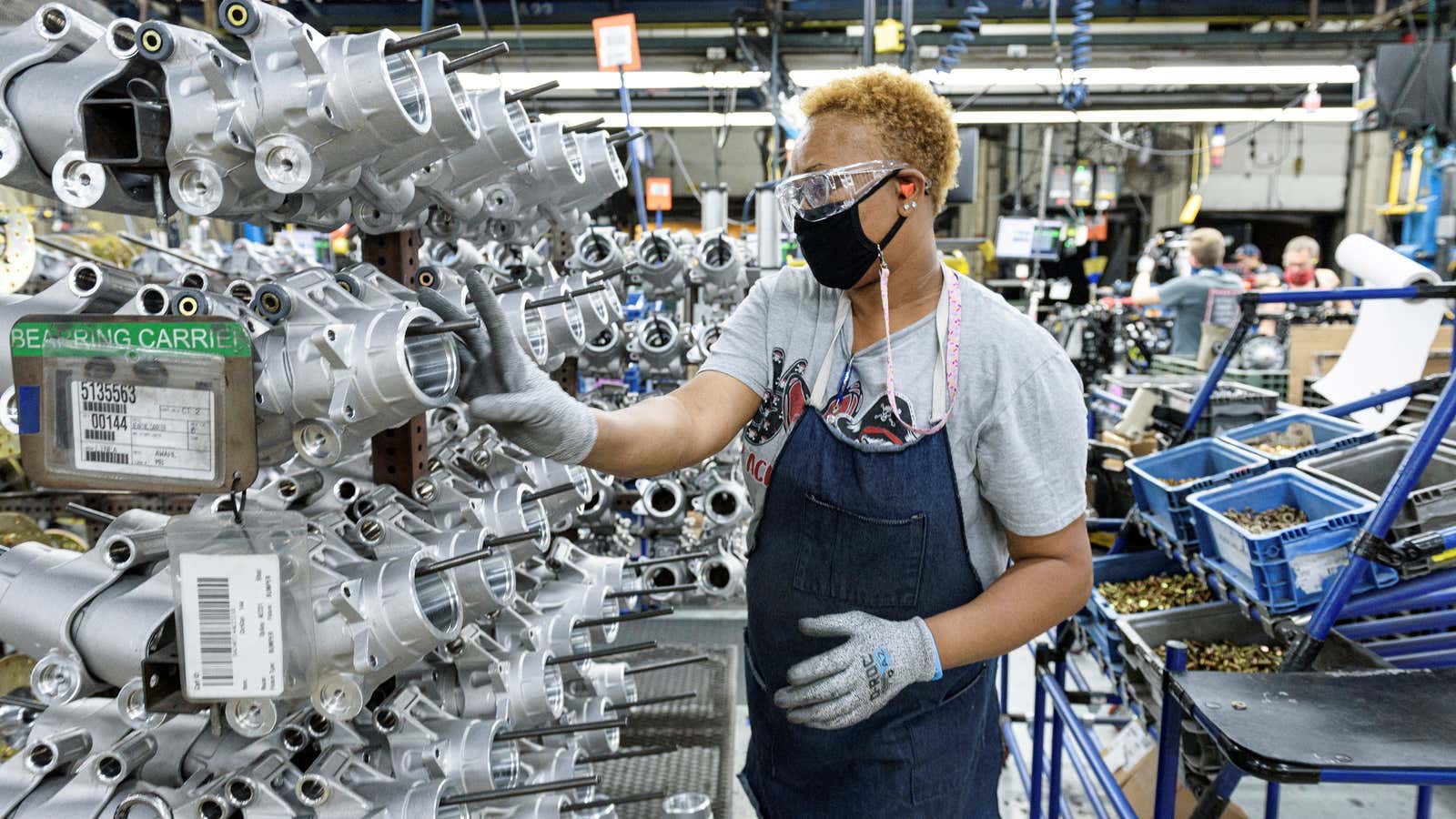The US economy is bouncing back from omicron much faster than from delta.
Despite the record number of omicron cases, a much smaller proportion of them have resulted in hospitalizations and deaths than in previous waves. And with hardly any new government restrictions, Americans have been free to go on about their normal lives.
That should make omicron less damaging to the economy than other variants. Here’s a look at how US workers and companies is faring as cases wane:
The US labor market is bouncing back
Even though the rapid spread of omicron has led to a record amount of Americans being out sick, there are already signs that the labor market is recovering. Though initial jobless claims climbed along with omicron cases, they are now dropping—much more quickly than after delta’s peak.
Air passengers are shrugging off omicron
Despite skyrocketing cases, almost twice the number of Americans got on a plane in January compared to the same month last year. The number of passengers going through TSA checkpoints was not that far off from that of January 2020, before the pandemic hit the US.
An economy ready for supply chain shocks
The economy is well set up to withstand omicron-related disruptions, with US businesses adding more to their inventories in the fourth quarter than they had in any other quarter in the past three years. That should help avoid shortages if pandemic restrictions in manufacturing plants are tightened, or companies keep experiencing staff shortages due to covid.
Businesses also invested $976 billion in their own companies—in things like equipment, structures, and intellectual property.
And while manufacturing stalled in December, new orders for goods and services still rose strongly, according to data from IHS Markit’s purchasing managers index.
“If case counts fall as quickly as they have in some other countries, then growth should remain positive,” said Brian Rose, a UBS senior economist in a research note. The bank expects the recovery to get back on track by the second quarter.
